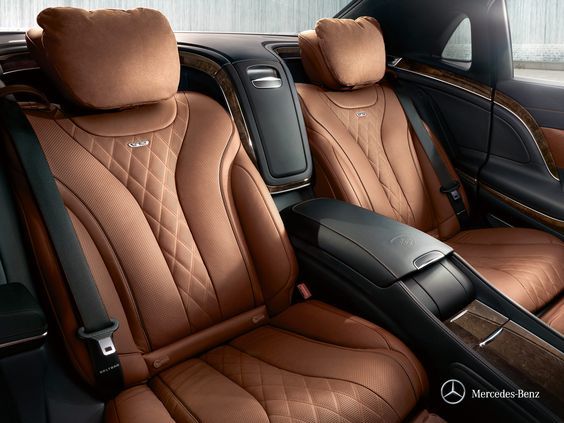Polyolefin elastomers have the properties of thermoset rubbers, but they can be processed using standard equipment for processing thermoplastic polymers. Products made based on POE provide a specific range of physical-mechanical properties in such a way that they adequately fill the gap between rubber and plastic. The possibility of using thermoplastic processing equipment leads to greater production capability and greater economic efficiency. Recycling of production waste, semi-finished materials left over from the process, reground materials such as the compound in the form of pleats taken out of the main and secondary channels (Runners) between the sprues and the injection throat for filling the injection mold, as well as rejected parts have significant economic advantages.
General physical-mechanical properties of POE with versatile and general applications are given below:

According to the definition, POE materials are defined as materials consisting of 1) compounds of various polyolefins, 2) crystalline plastics and 3) amorphous (non-crystalline) elastomers. The most common types of POEs consist of polypropylene (PP) and ethylene propylene rubber (EPR). EPR can be composed of only ethylene and propylene copolymers or a third monomer (diene monomer) which provides a small amount of unsaturation in the polymer chain so that it can form the crosslink network using the vulcanization process.
Thus, the polymer made of ethylene-propylene-diene monomer is called EPDM rubber. Other olefinic polymers commonly used in POE compounds are: 1) low density polyethylene (LDPE), 2) high density polyethylene (HDPE), 3) linear low density polyethylene (LLDPE), 4) copolymers of ethylene with vinyl acetate (EVA). , 5) ethyl acrylate (EEA), 6) methyl acrylate (EMA), 7) semi-crystalline copolymers of propylene, ethylene and polybutene.
POE products are compounds or mixtures of polymers based on polyolefin. Like most TPEs, they consist of hard and soft zones. The exact size and shape of these zones determine the properties of the mixtures. The properties of products can be determined to a large extent by 1) the manufacturing process of the compound and 2) the chemical composition.
An unlimited number of formulations based on POE mixtures and final application can be designed. This possibility of diverse production is due to a wide range of polyolefin polymers that can be used as needed. Each of these compounds can create a set of specific properties in the final product, which may be useful in some special applications. In most POE compounds, the hard region is composed of isotactic propylene homopolymer or isotactic propylene copolymer with a small amount of ethylene as an auxiliary monomer or comonomer. Ethylene monomer can be distributed either randomly or in the form of block in the copolymer. Some segments or parts of the polymer chain are composed of ethylene and propylene copolymers, while other segments of the polymer chain consist almost entirely of propylene homopolymer. Homopolymer and block copolymers have a crystalline melting point range of 311-329 oF, while random copolymers have a melting point range of 293-311 oF. The relatively high melting point of the polypropylene portion (PP portion) in the POE microstructure results in products that retain many of their mechanical properties at temperatures close to the melting point (Tm) of the PP resin.
High impact strength at low temperature is achieved through the addition of some ethylene monomer that enters into the microstructure of the copolymer. Also, ethylene reduces the rigidity of the copolymer and increases its flexibility. When the amount of ethylene in the random copolymer increases, the melting point decreases rapidly compared to block copolymers with a steep slope, which means that the effect of the amount of ethylene monomer in reducing the melting point of random copolymers is much greater than that of block copolymers.
The soft region of the POE polymer chain consists of EPR or EPDM rubber. Rubber materials with approximately equal amounts of ethylene and propylene are completely. The softest types of EPDM rubbers are the most effective impact modifiers used as additives in POE formulations.
Some additives used in POE compounds can modify the rubber phase. Hydrocarbon oils increase the softness and flexibility of the POE compound by creating inflation in the rubber phase. Also, polyethylene increases the volume of the rubber phase, but does not have the effect of softening oils. HDPE improves the impact strength of the mixture at low temperatures while keeping stiffness unchanged. In addition, a wide range of other additives are also used in POEs compounding. These additives include: 1) fillers or reinforcing agents 2) lubricants 3) plasticizers 4) heat stabilizers 5) antioxidants 6) UV stabilizers 7) colorants 8) flame retardants 9) foaming agents 10) flow modifiers 11 ) processing aids.
POEs can be formulated to achieve a combination of mechanical properties such as strength and toughness. TPO products are available in a range of 40-70 Shore D hardness with flexural modulus varying from 2,700-300,000 MPa.
Several factors determine the upper limit of the temperature used during operation and at the time of consumption for a product made of POE. The melting temperature of the hard zone in polymer being the most important factor for short-term contacts at that temperature. For most POEs, the melting point of polypropylene (PP) is the limiting factor. PP homopolymers melt in the temperature range of 320-350 oF. Most POE (hard/rigid) compounds retain their useful properties at temperatures as high as 280°F. For long-term exposure at these temperatures, the resistance of POE against the wear and aging over time is a very important factor. Its importance at very high working temperatures during use is just as the melting point of polymers with hard zone.
The oxidative stability of POEs is a function of the action of antioxidant and stabilizer additives. The most effectively stabilized hard compounds of POE are formulated with heat stabilizers, antioxidants and reinforcements to easily withstand continuous working temperatures up to 250°F or even higher. Hard compounds of POE are general purpose and multi-purpose, maintaining their physical properties when used for long periods in the temperature range of 180-212°F. One of the prominent properties of POEs is their efficiency at low temperatures. POE compounds retain their flexibility at very low temperatures. Softer commercial types of POE have a break point lower than -112 oF when exposed to low temperatures. They are brittle at this temperature which is called brittle point at low temperature.
Almost all POE products retain their physical properties when exposed to sunlight or adverse weather conditions. POE compounds are made without the use of unsaturated polymers in their polymer skeleton and therefore are not susceptible to decomposition, degradation and disintegration through ozone in the air. EPDM is a weather resistant rubber. TPOs are not sensitive to attack by micro-organisms and fungal growth. Many types of POEs have outstanding color stability. These stabilized types are especially designed for automotive unpainted parts. They are exposed to sunlight aging, wear and tear tests in fluoride for more than 2 hours without any significant discoloration.
All POE products are resistant to water and also show moderate chemical resistance to acids and bases. Hot hydrocarbon solvents eventually soften them and cause swelling in POE products. This softening and swelling is typically less for harder formulations, but more severe in softer products. The inactive surface of POE makes it difficult to chemically bond with other materials.
Most POE compounds are good electrical insulating materials. They have good dielectric strength properties and do not absorb moisture.
Many POE components manufactured for automotive applications must be painted with an automotive finishing material.
Advantages of POE
- Excellent electrical insulation properties
- In order to increase the final working temperatures, it can be mixed with nylon.
- Excellent impact resistance
- Excellent fatigue resistance
- Excellent low temperature breaking point for softer types
- Excellent resistance to moisture absorption
- Non-sensitive to ozone destruction
- UV resistant types are available
Applications of POE
- Automotive exterior applications
Interior trim, body or interior molding, bumper covers, bumper end caps, bumper side parts, mudguard liners or covers, windshield sunshades, hood rock and bug guards, and curtain liners.
- Automotive under the hood applications
Bobbin nut of wiring tool, air molded tube or duct, sound absorbing fire wall lining, car speaker box wraps, rocker panel covers, rub strips and car footrests.
- Wire and cable
POEs are used for a number of low voltage wire and cable applications. Also, POEs are used for insulation and jacketing of battery booster cables, portable wires for power storage and submersible pump cable.
- Mechanical goods
Sealants, electrical plugs, extruded sheet and weather tapes.
- Impact modifiers
Polyolefin and PP are used to improve impact strength at low temperatures. POE is added to HDPE to improve stress crack resistance.


